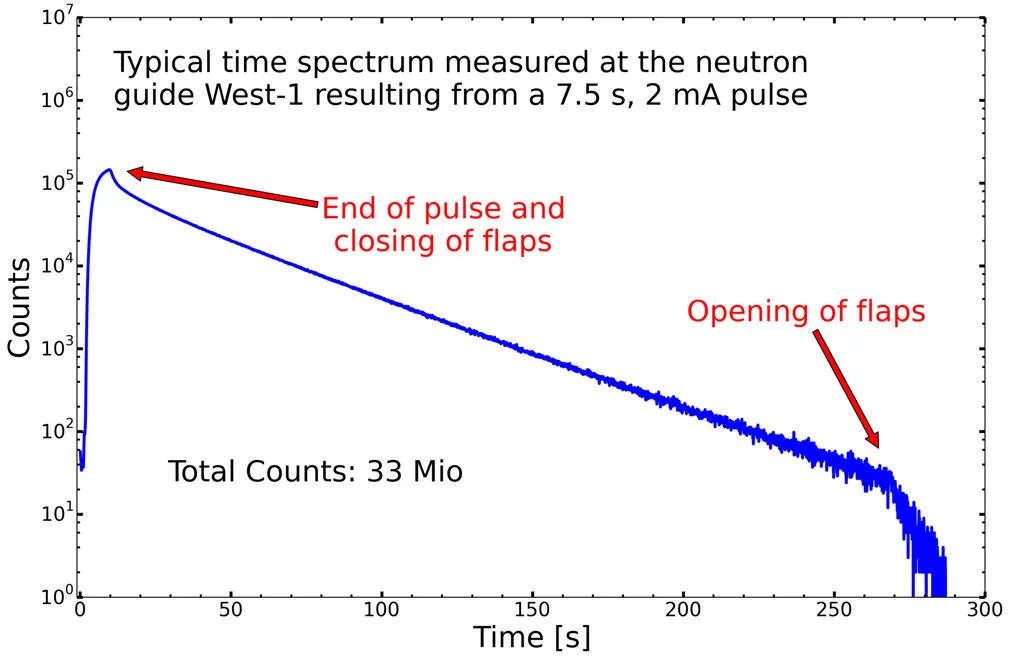A user facility providing ultracold neutrons for fundamental physics research, based on accelerator driven spallation neutron production and a superthermal converter, was built at the Paul Scherrer Institut and has been in operation since 2011 (UCN Source).
B. Lauss and B. Blau give a recent overview of the UCN source here.
Detailed studies of all system components were conducted to understand the performance of the source concerning UCN output. Neutron production and thermalization were checked to match detailed simulations (Becker et al. 2015). The transport of UCNs from production to detection via the UCN source setup was studied in detail (Bison et al. 2020). The occurrence of snow on top of the solid deuterium moderator during source operation was found to be limiting (Anghel et al. 2018), however, can be overcome with a "conditioning" method conducted daily during operation.
We have defined a standard measurement (Bison et al. 2016) to determine the performance of a UCN source via characterization of the UCN density at several operating UCN sources world-wide (Bison et al. 2017).
A calibration of the UCN source output using changing deuterium masses is explained in Bison et al. 2023.
A measurement of the energy spectrum of the UCN source output on port West-1 was published in Bison et al. 2023.
Figure 1 shows the UCN delivery at a beamport as seen by a UCN detector after a proton beam pulse, which can be repeated every 300 seconds (Kirch et al. 2020).


